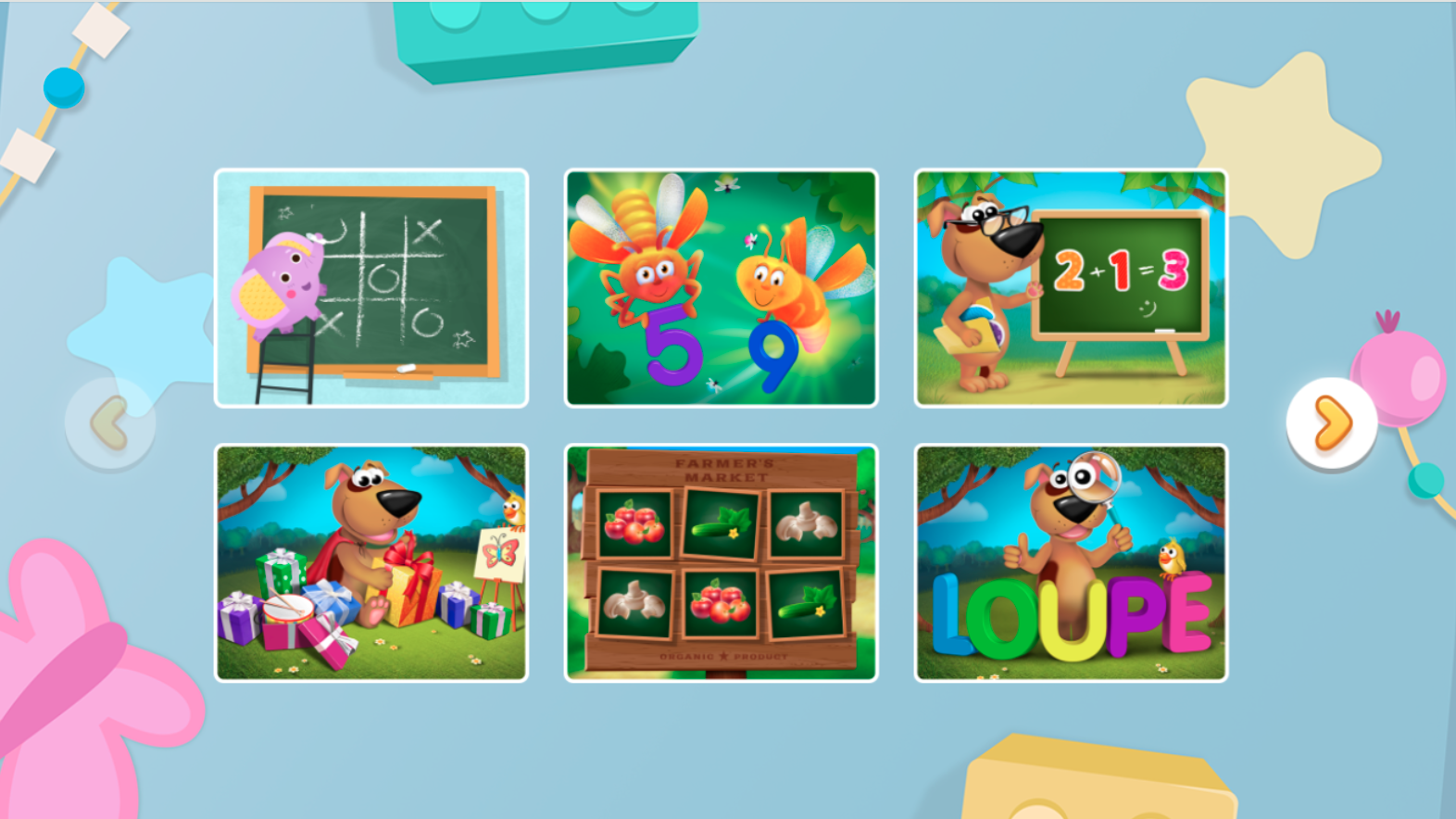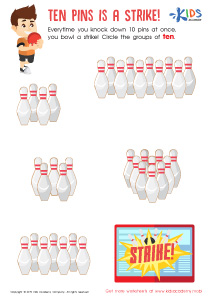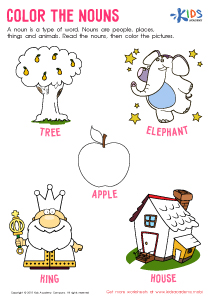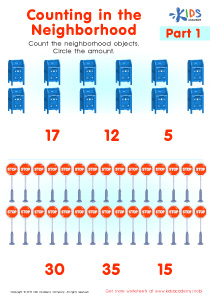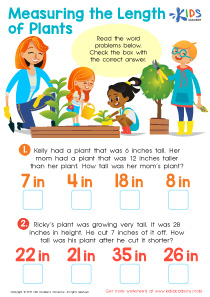Easy Tracing Numbers Worksheets for Ages 4-5
10 filtered results
-
From - To
Introducing the "Easy Tracing Numbers for Ages 4-5" worksheets, a delightful collection designed to guide your little ones on their first steps towards numerical mastery! With our carefully crafted pages, children will embark on an exciting journey, tracing their way through numbers, enhancing their fine motor skills, and building a solid foundation in early math concepts. Perfect for preschoolers, this set offers a fun, engaging, and supportive learning experience. Watch as your child gains confidence with each number they master. Embrace the joy of learning and make your child's educational journey an unforgettable adventure with our Easy Tracing Numbers worksheets!
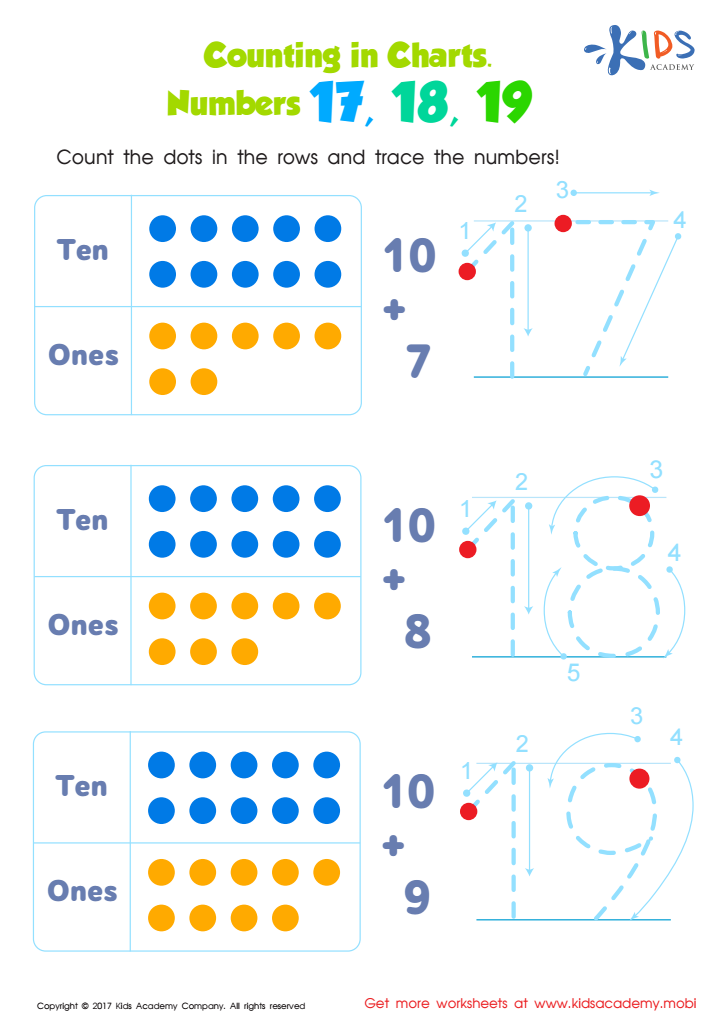

Kindergarten Number Tracing: Counting in Charts Worksheet
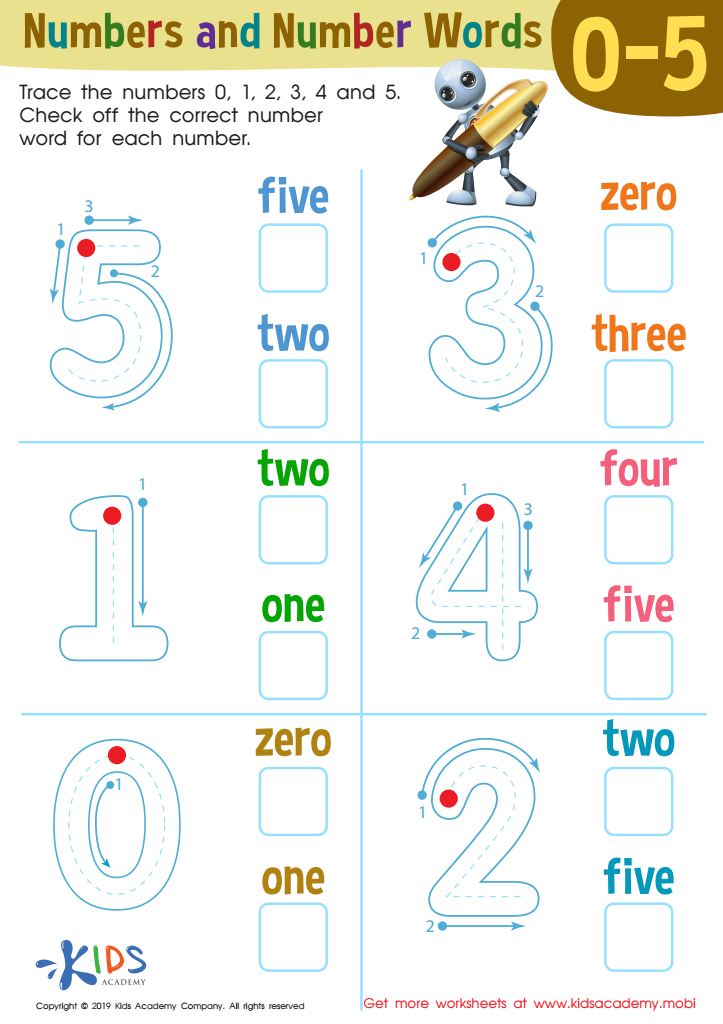

Numbers and Number Words Worksheet
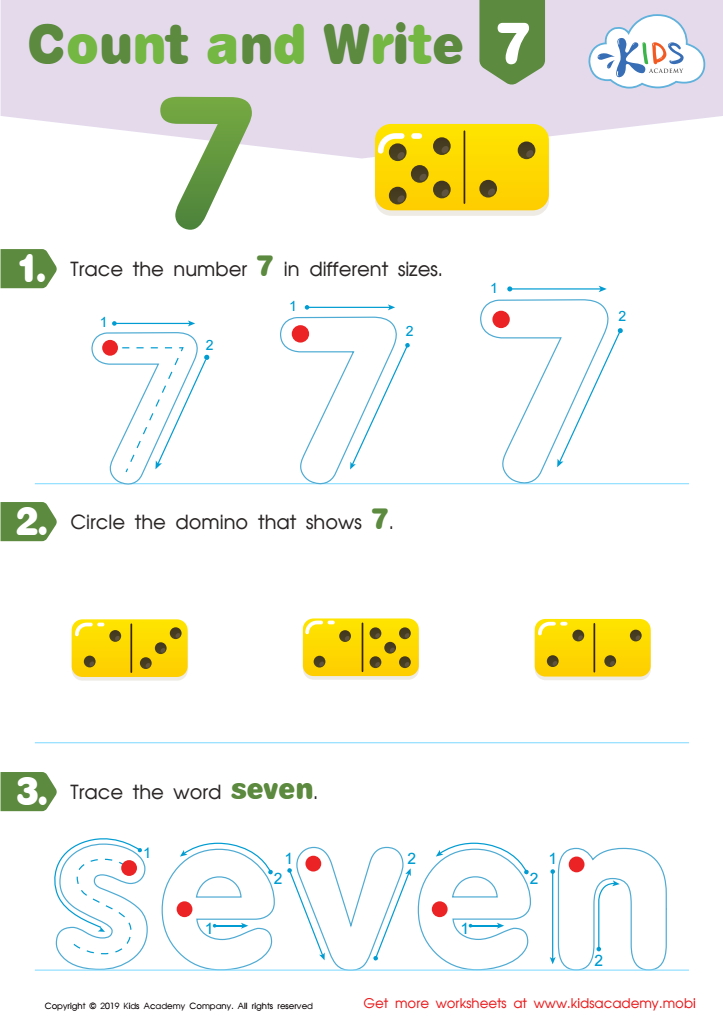

Count and Write 7 Worksheet
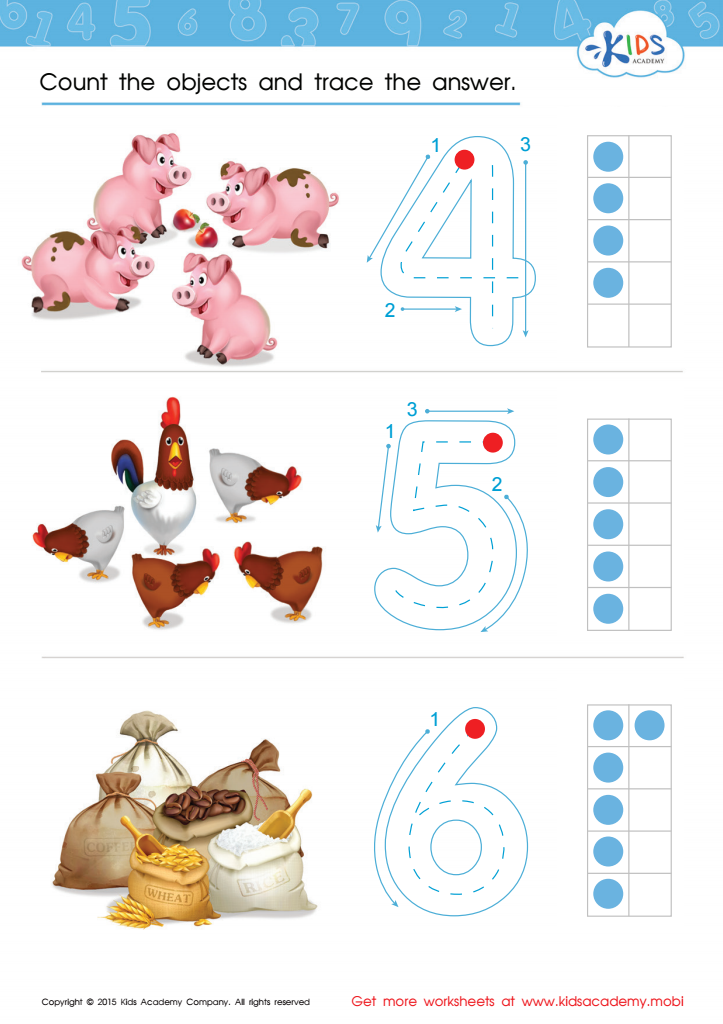

Count and Trace 4 – 6 Worksheet


Counting Shapes Worksheet
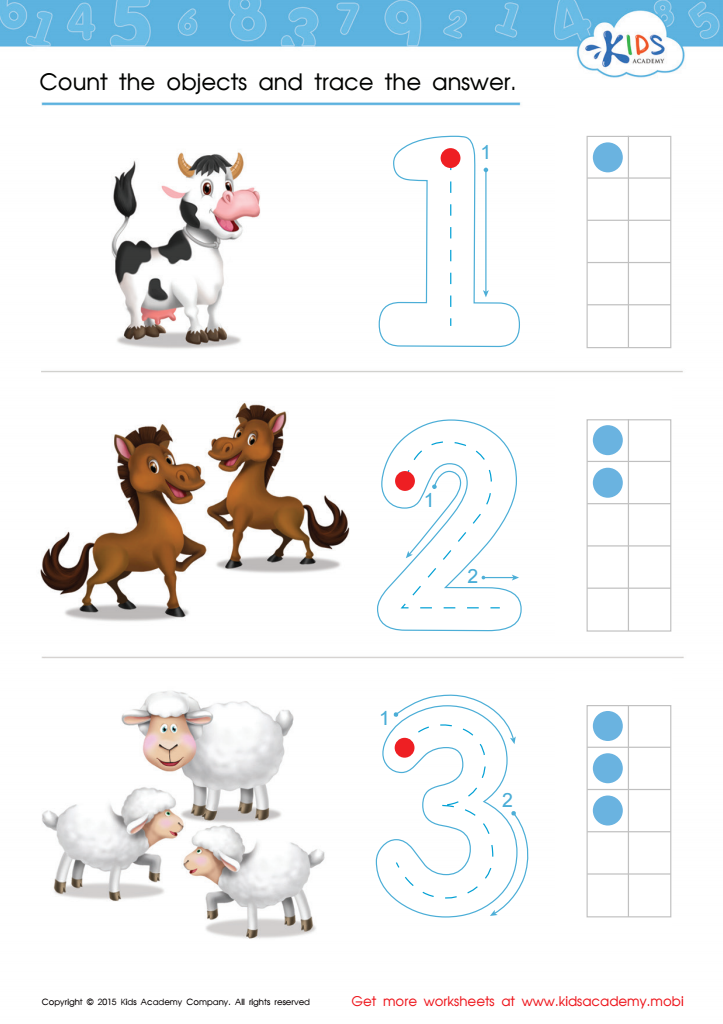

Count and Trace 1 – 3 Worksheet
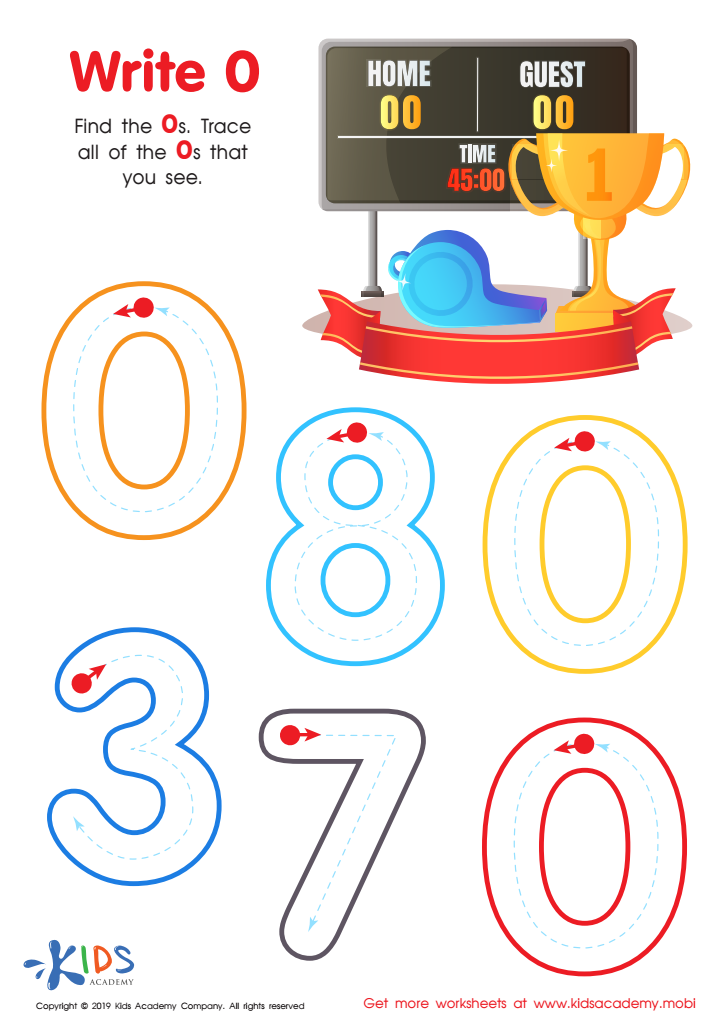

Write 0 Worksheet
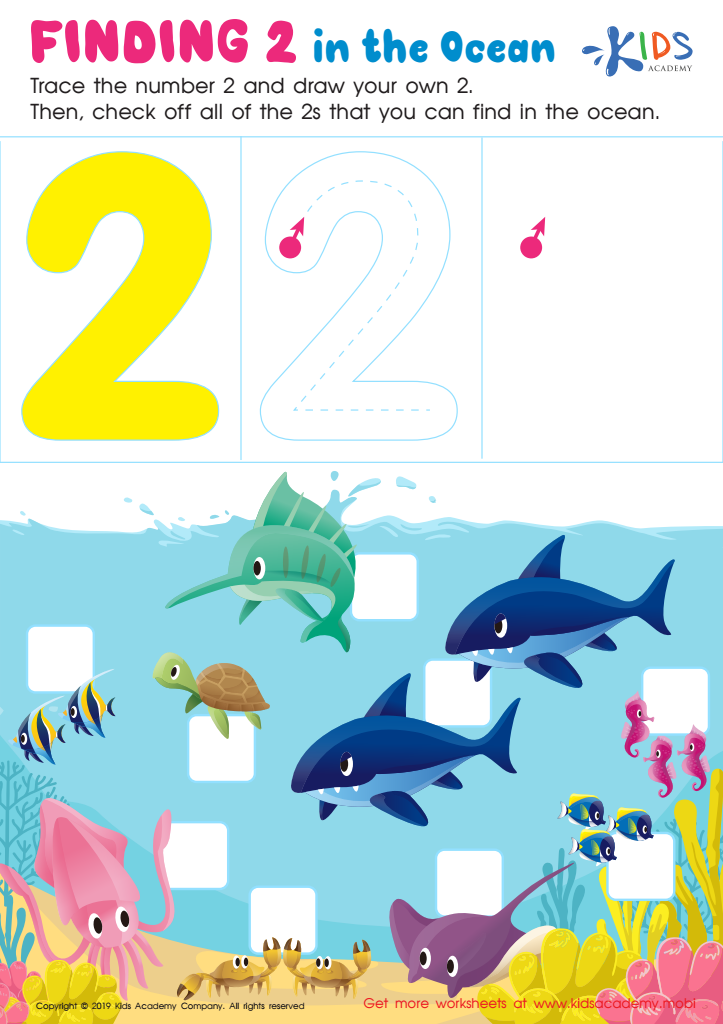

Finding 2: In the Ocean Worksheet
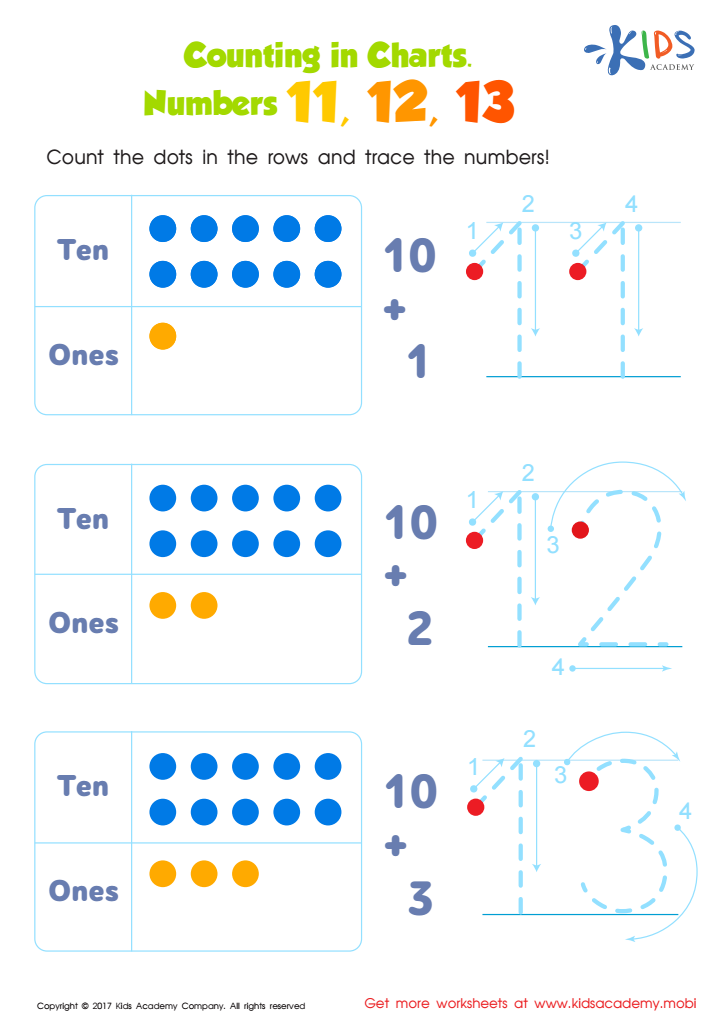

Number Tracing Worksheet For Kindergarten
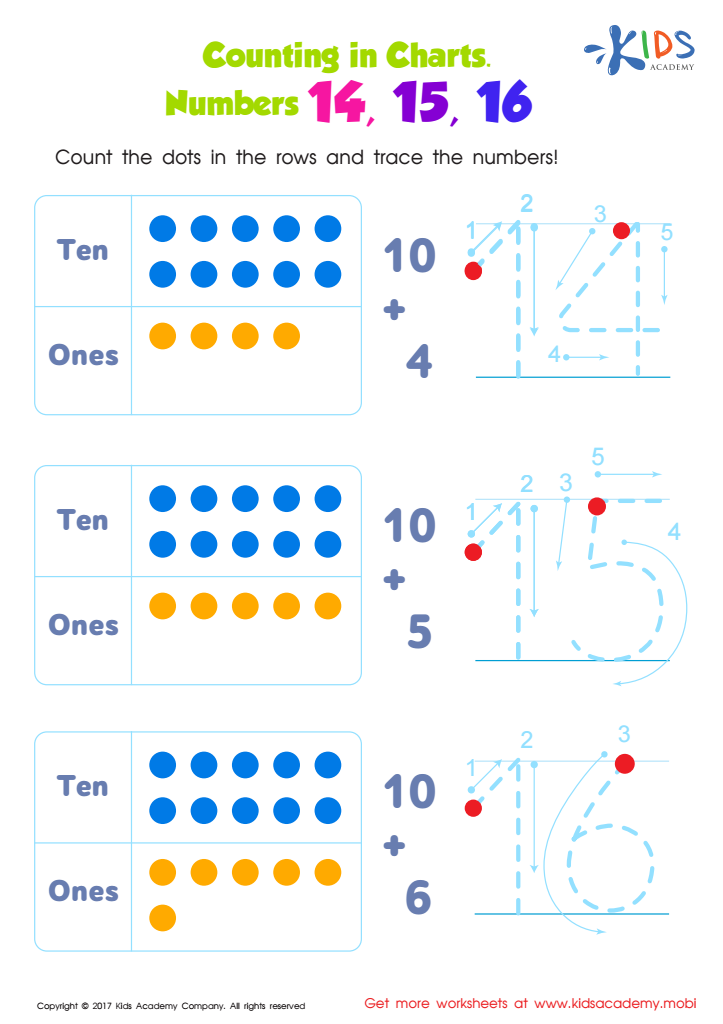

Number Tracing Worksheet
Easy Tracing Numbers for Ages 4-5 are an invaluable resource for young learners beginning their educational journey. At this critical developmental stage, children are just starting to grasp the basics of numbers and their significance. These worksheets are meticulously designed to cater to young minds by making learning both fun and accessible.
One of the primary reasons these easy tracing numbers worksheets are so beneficial is that they help improve fine motor skills. As children trace the numbers, they learn to control their pencil movements, which is crucial for writing. Moreover, this activity aids in number recognition, an essential skill that forms the foundation for future math learning. By repeatedly tracing numbers, children become familiar with their shapes, allowing for easier recall and understanding.
Furthermore, these worksheets are tailored specifically for ages 4-5, ensuring that the level of difficulty is just right to challenge the children without overwhelming them. This balance is vital for keeping young learners engaged and motivated. Easy Tracing Numbers for Ages 4-5 not only prepare children for more advanced numerical concepts but also instill a sense of achievement and confidence in their own abilities.
In conclusion, Easy Tracing Numbers for Ages 4-5 are a crucial tool in early education, fostering number familiarity, enhancing fine motor skills, and building confidence in young learners as they take their first steps into the world of mathematics.
 Assign to My Students
Assign to My Students









